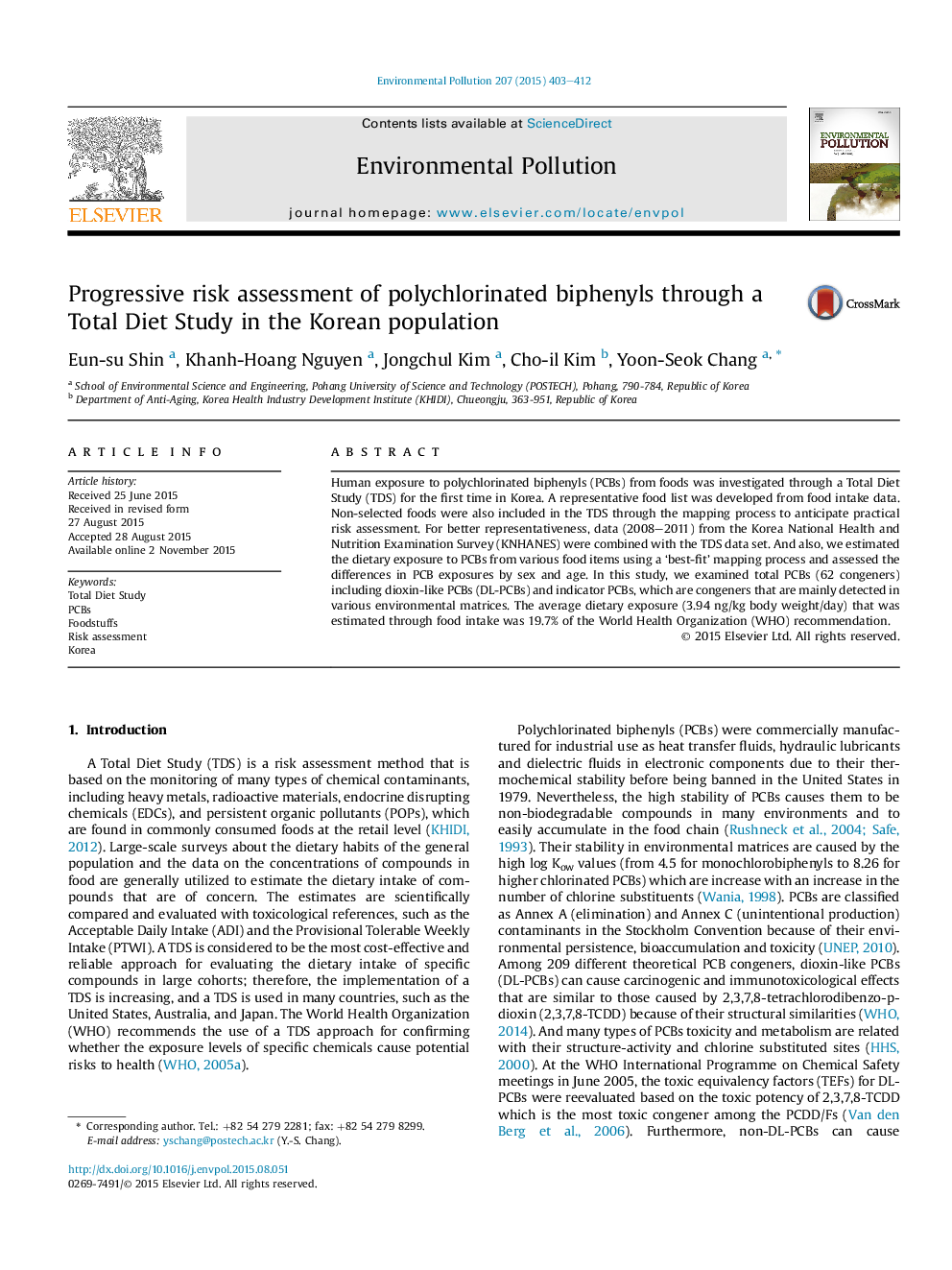| Article ID | Journal | Published Year | Pages | File Type |
|---|---|---|---|---|
| 6316212 | Environmental Pollution | 2015 | 10 Pages |
Abstract
Human exposure to polychlorinated biphenyls (PCBs) from foods was investigated through a Total Diet Study (TDS) for the first time in Korea. A representative food list was developed from food intake data. Non-selected foods were also included in the TDS through the mapping process to anticipate practical risk assessment. For better representativeness, data (2008-2011) from the Korea National Health and Nutrition Examination Survey (KNHANES) were combined with the TDS data set. And also, we estimated the dietary exposure to PCBs from various food items using a 'best-fit' mapping process and assessed the differences in PCB exposures by sex and age. In this study, we examined total PCBs (62 congeners) including dioxin-like PCBs (DL-PCBs) and indicator PCBs, which are congeners that are mainly detected in various environmental matrices. The average dietary exposure (3.94Â ng/kg body weight/day) that was estimated through food intake was 19.7% of the World Health Organization (WHO) recommendation.
Related Topics
Life Sciences
Environmental Science
Environmental Chemistry
Authors
Eun-su Shin, Khanh-Hoang Nguyen, Jongchul Kim, Cho-il Kim, Yoon-Seok Chang,
